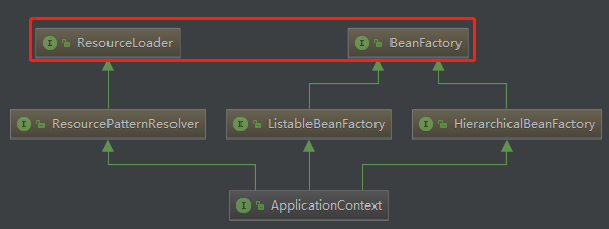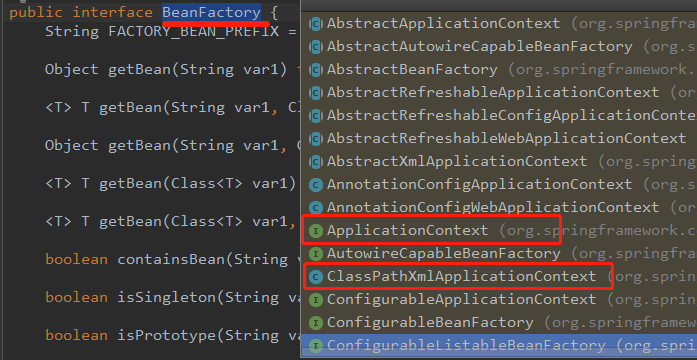本文源码:GitHub·点这里 || GitEE·点这里
一、抽象工厂模式
1、生活场景
汽车生产根据用户选择的汽车类型,指定不同的工厂进行生产,选择红旗轿车,就要使用中国工厂,选择奥迪轿车,就要使用德国工厂。
2、抽象工厂模式
- 抽象工厂模式:定义了一个interface用于创建相关对象或相互依赖的对象,而无需指明具体的类;
- 抽象工厂模式可以将简单工厂模式和工厂方法模式进行整合;
- 从设计层面看,抽象工厂模式就是对简单工厂模式的改进(或者称为进一步的抽象)。
- 将工厂抽象成两层,AbstractFactory(抽象工厂) 和 具体实现的工厂子类,方便程序扩展。
3、代码UML图

4、源代码实现
/**
* 抽象工厂模式
*/
public class C01_AbstractFactory {
public static void main(String[] args) {
CarProductFactory factory = new ChinaCarFactory() ;
factory.getCar("hq") ;
factory = new GermanyCarFactory () ;
factory.getCar("ad") ;
}
}
// 汽车生产抽象工厂
interface CarProductFactory {
CarProduct getCar (String type) ;
}
// 中国汽车工厂
class ChinaCarFactory implements CarProductFactory {
@Override
public CarProduct getCar(String type) {
CarProduct product = null ;
if ("hq".equals(type)){
product = new HQCar() ;
product.name="红旗一号" ;
product.date="1999-09-19" ;
product.material();
product.origin();
} else if ("df".equals(type)){
product = new DFCar() ;
product.name="东风一号" ;
product.date="2019-09-19" ;
product.material();
product.origin();
}
return product ;
}
}
// 德国汽车工厂
class GermanyCarFactory implements CarProductFactory {
@Override
public CarProduct getCar(String type) {
CarProduct product = null ;
if ("ad".equals(type)){
product = new ADCar() ;
product.name="奥迪A8" ;
product.date="2017-09-19" ;
product.material();
product.origin();
} else if ("bm".equals(type)){
product = new BMCar() ;
product.name="宝马X8" ;
product.date="2018-09-19" ;
product.material();
product.origin();
}
return product ;
}
}
// 汽车生产抽象类
abstract class CarProduct {
/**
* 汽车名称
*/
protected String name ;
/**
* 生产日期
*/
protected String date ;
/**
* 材料
*/
abstract void material () ;
/**
* 产地
*/
abstract void origin () ;
}
// 红旗车
class HQCar extends CarProduct {
@Override
void material() {
System.out.println(super.name+"材料...");
}
@Override
void origin() {
System.out.println(super.date+":"+super.name+"在中国北京生产");
}
}
// 东风车
class DFCar extends CarProduct {
@Override
void material() {
System.out.println(super.name+"材料...");
}
@Override
void origin() {
System.out.println(super.date+":"+super.name+"在中国南京生产");
}
}
// 奥迪车
class ADCar extends CarProduct {
@Override
void material() {
System.out.println(super.name+"材料...");
}
@Override
void origin() {
System.out.println(super.date+":"+super.name+"在德国柏林生产");
}
}
// 宝马车
class BMCar extends CarProduct {
@Override
void material() {
System.out.println(super.name+"材料...");
}
@Override
void origin() {
System.out.println(super.date+":"+super.name+"在德国慕尼黑生产");
}
}
二、Spring框架应用
1、场景描述
Spring框架中获取配置文件中Bean的多种方式。
2、核心配置
<bean id="carBean" class="com.model.design.spring.node04.abstractFactory.CarBean">
<property name="name" value="中国红旗" />
</bean>
<bean id="carBean1" class="com.model.design.spring.node04.abstractFactory.CarBean">
<property name="name" value="德国奥迪" />
</bean>
3、测试文件
这里使用了两种方式获取。
@RunWith(SpringJUnit4ClassRunner.class)
@ContextConfiguration(locations = {"classpath:/spring/spring-abstract-factory.xml"})
public class SpringTest {
@Resource
private BeanFactory beanFactory ;
@Test
public void test01 (){
CarBean carBean = (CarBean)beanFactory.getBean("carBean") ;
System.out.println(carBean.getName());
}
@Test
public void test02 (){
ApplicationContext context01 = new ClassPathXmlApplicationContext(
"/spring/spring-abstract-factory.xml");
CarBean carBean = (CarBean)context01.getBean("carBean1") ;
System.out.println(carBean.getName());
}
}
4、结构分析


抽象工厂封装对象的创建。在Spring中,通过实现BeanFactory。可以从Spring的各种容器获取bean。根据Bean的配置,getBean方法可以返回不同类型的对象(单例作用域)或初始化新的对象(原型作用域)。在BeanFactory的实现中,我们可以区分:ClassPathXmlApplicationContext,XmlWebApplicationContext等。
三、工厂模式小结
三种工厂模式 (简单工厂模式、工厂方法模式、抽象工厂模式),工厂模式的核心用意将实例化对象的代码封装起来,放到工厂类中统一管理和维护,完成代码依赖关系的解耦。从而提高程序的可扩展性和维护性。
四、源代码地址
GitHub·地址
https://github.com/cicadasmile/model-arithmetic-parent
GitEE·地址
https://gitee.com/cicadasmile/model-arithmetic-parent
